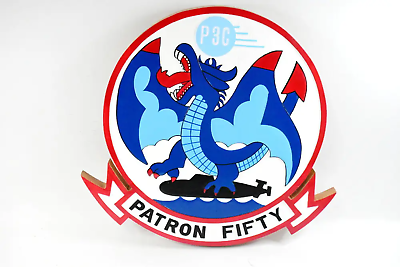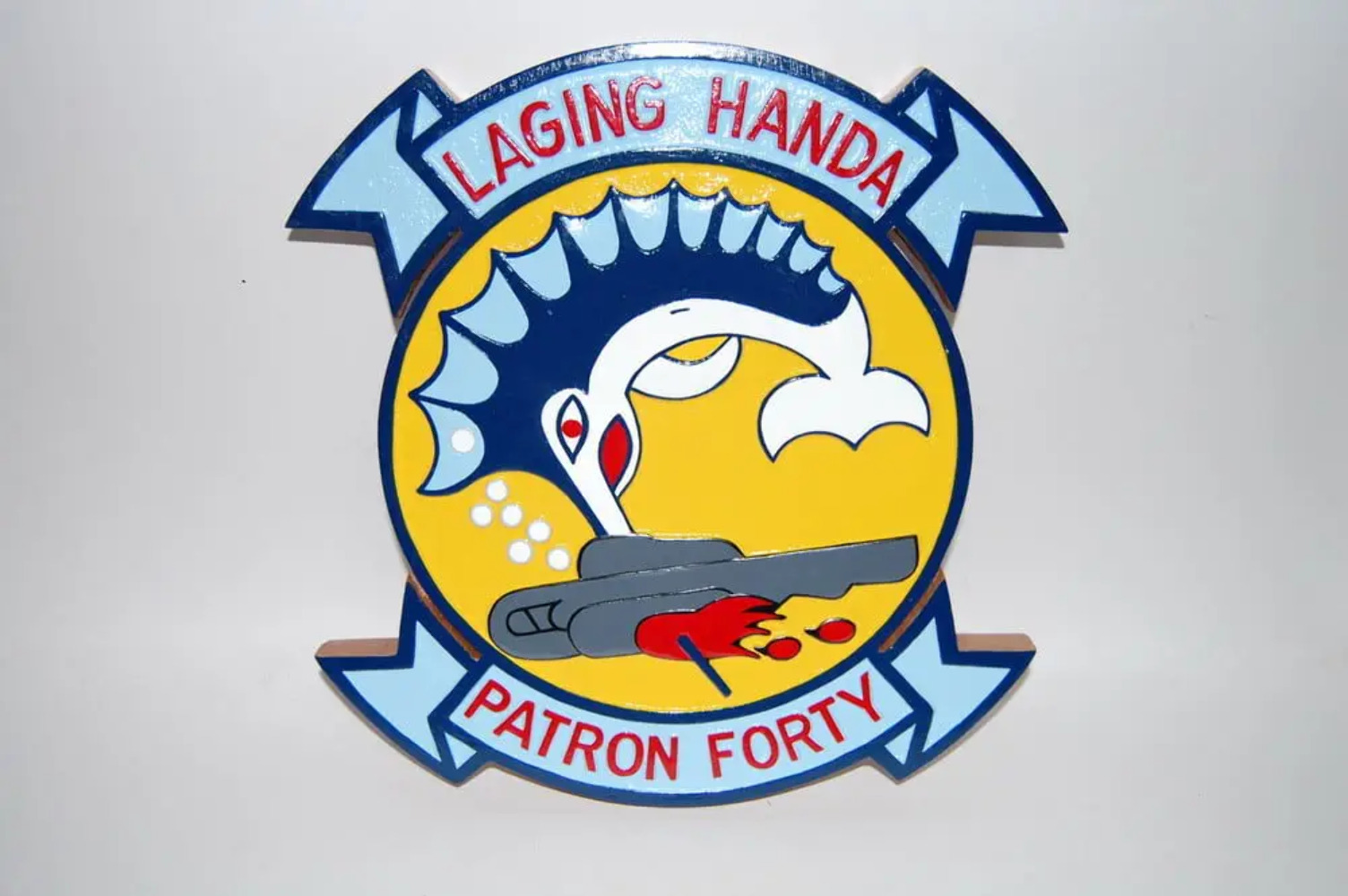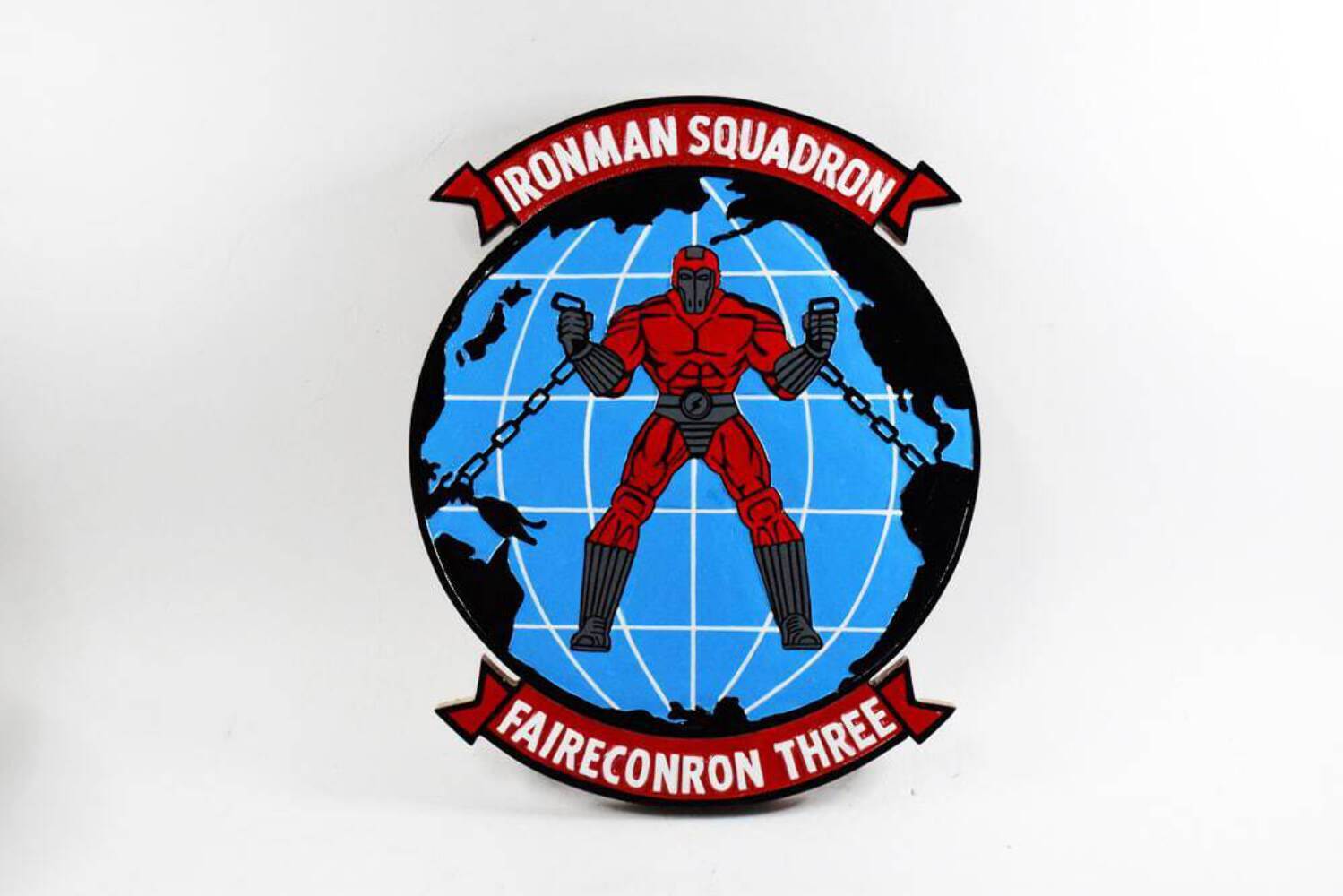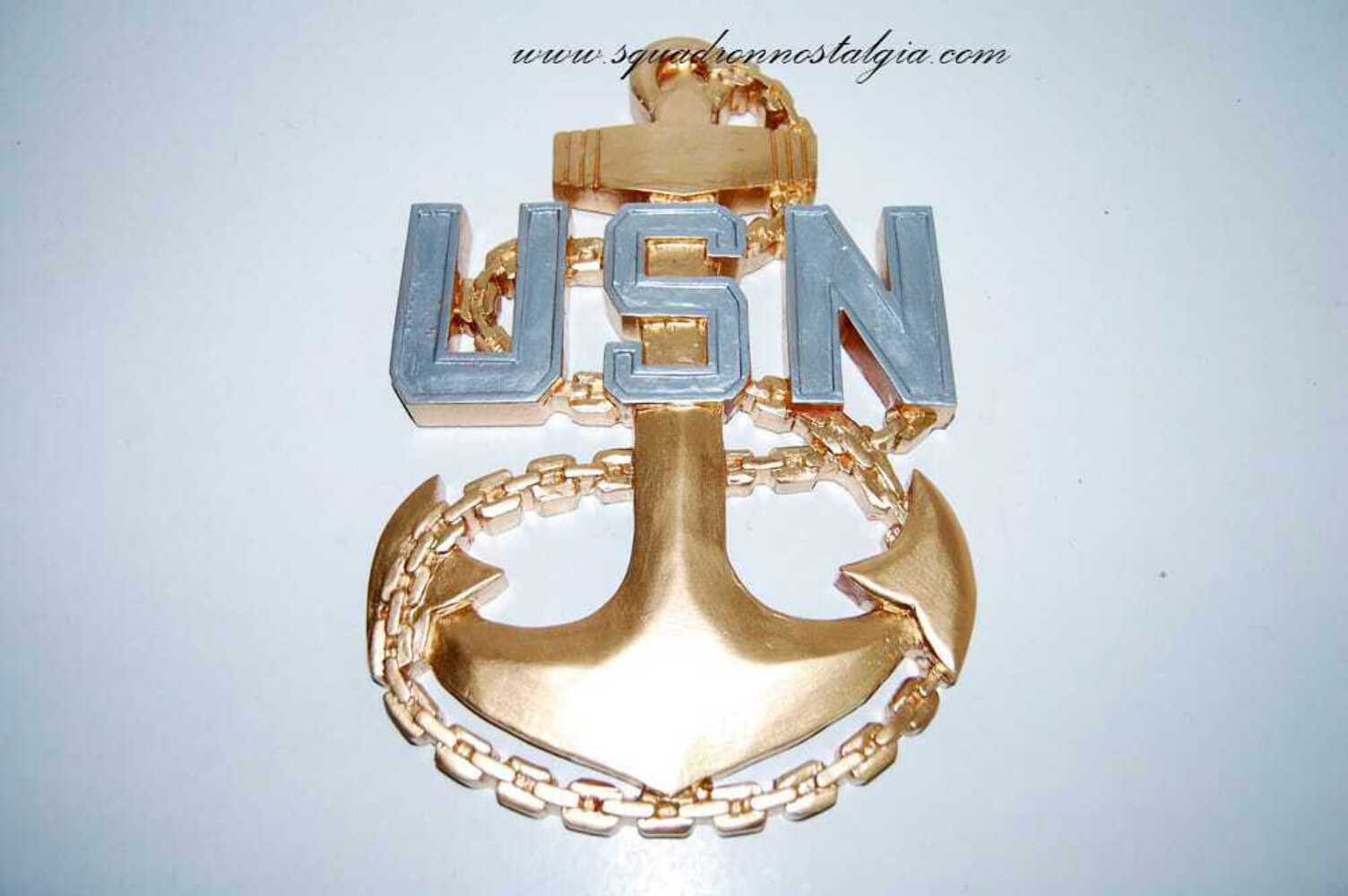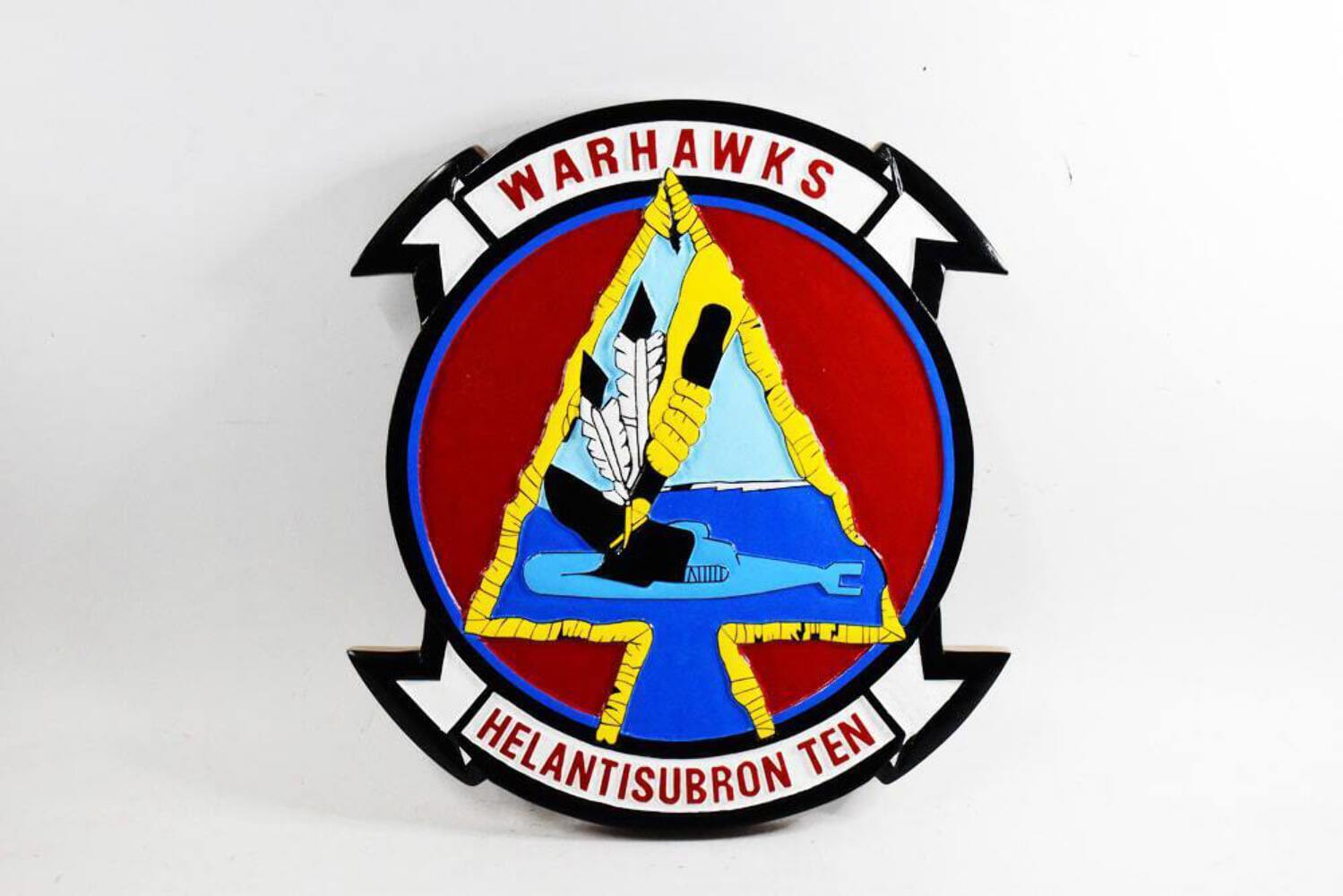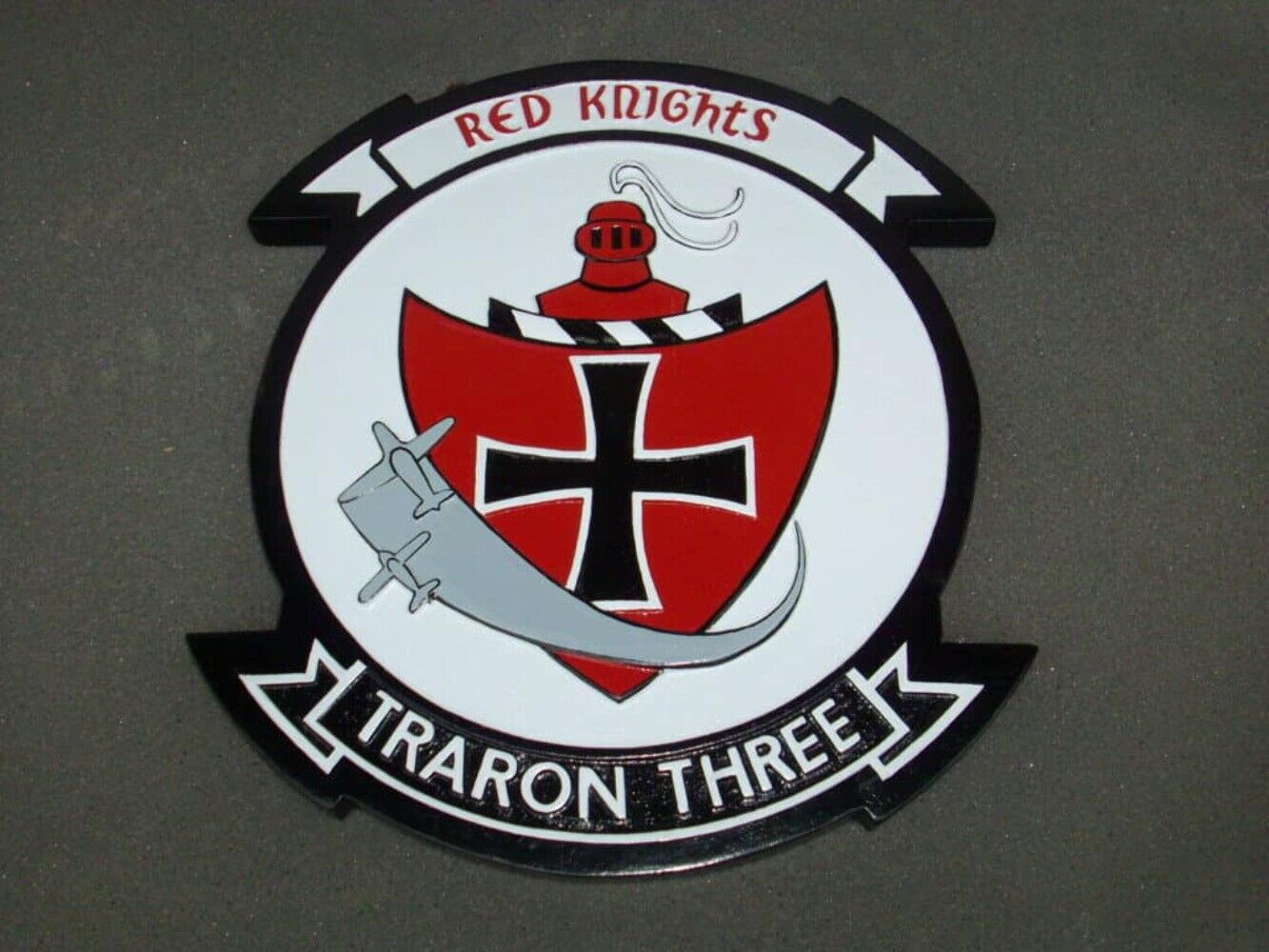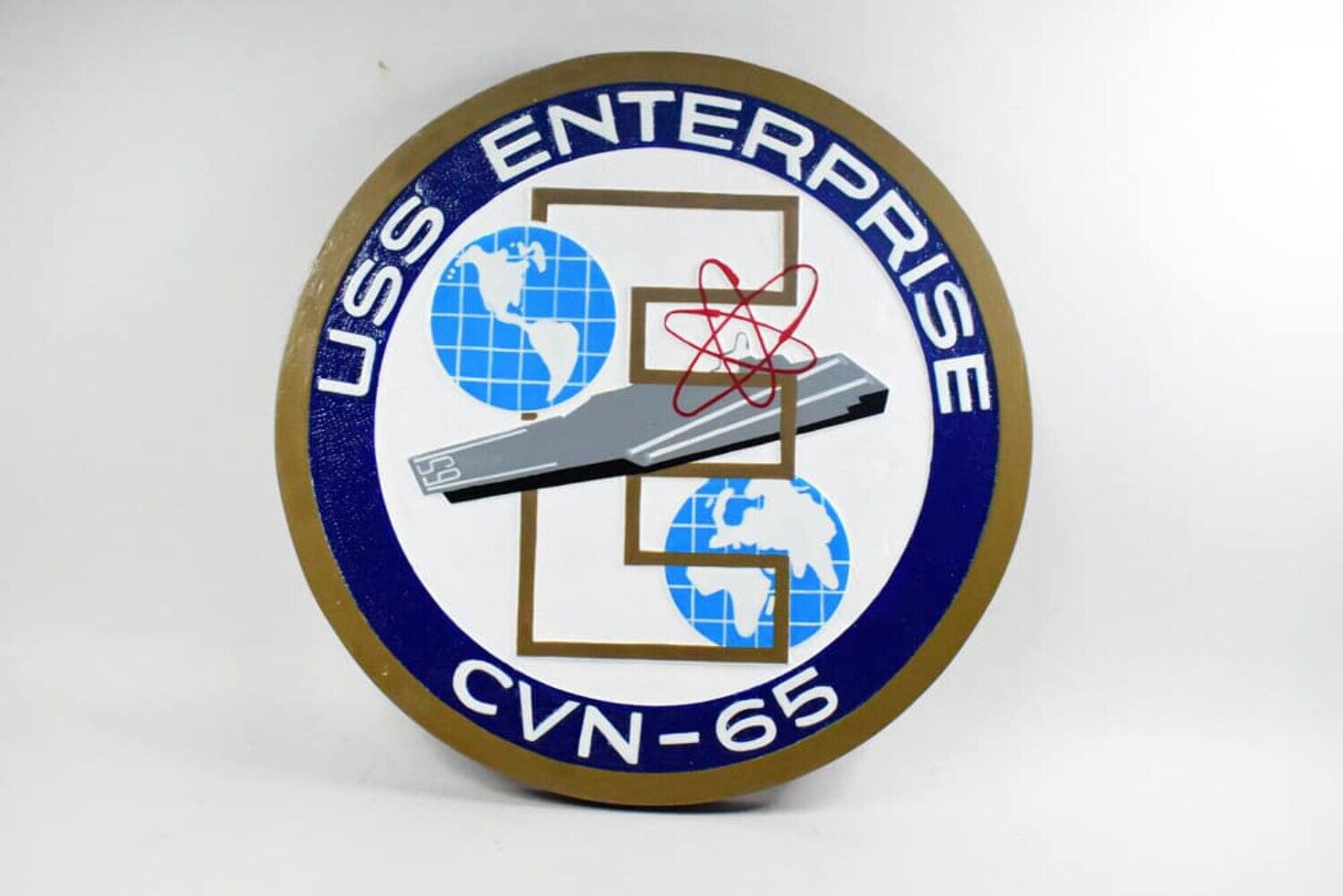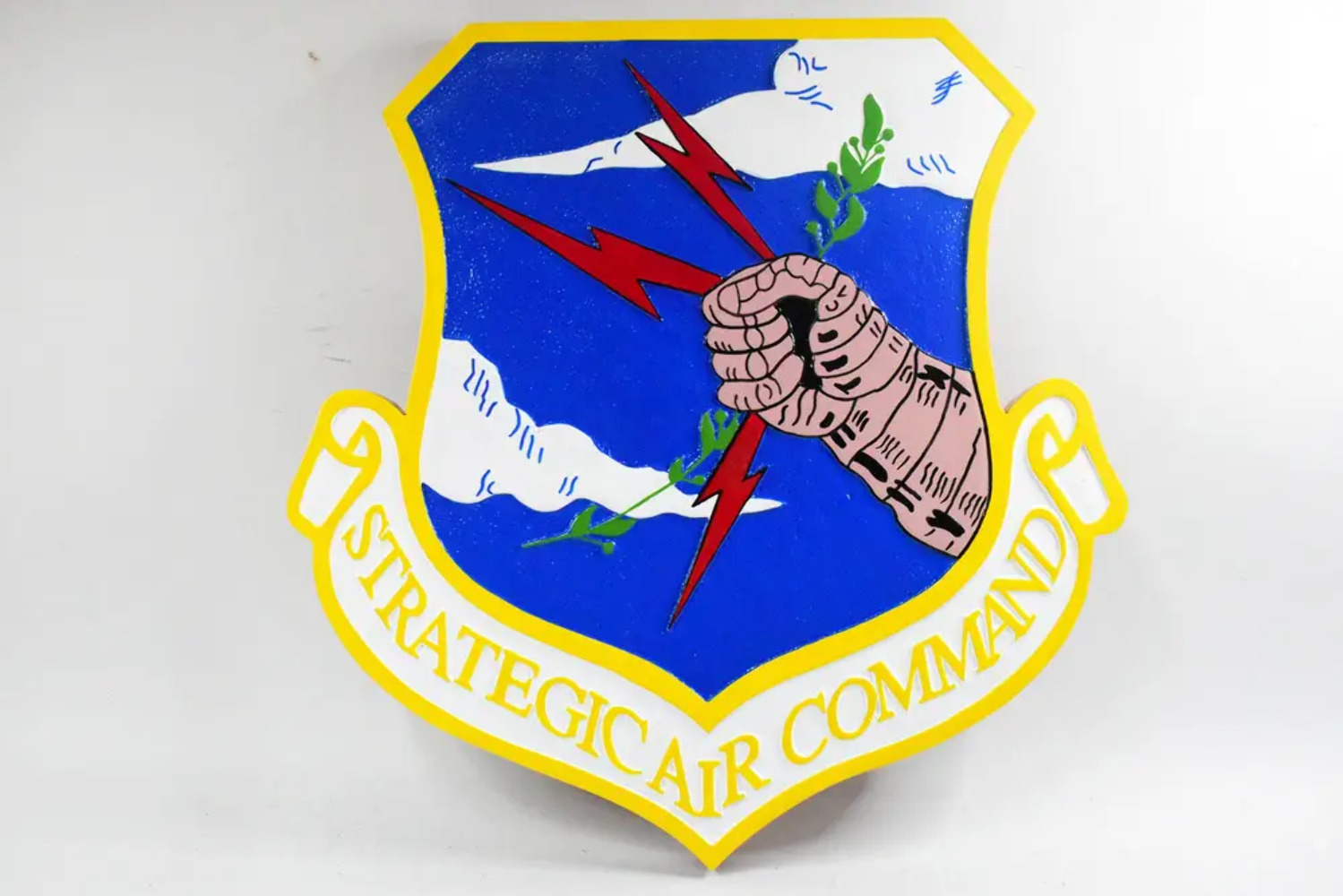-40%
VP-50 Blue Dragons Plaque
$ 83.95
- Description
- Size Guide
Description
VP-50 Blue Dragons PlaqueVP-50 Blue Dragons Plaque
VP-50 Blue Dragons Plaque
A genuine all wood VP-50 Blue Dragons14 inch solid wood plaque. With its bright colors, this plaque will be a stand-out in any space!
The use of naval aviation insignia is a modern form of heraldry that dates back to the early period of naval aviation in the 1920’s and captures many proud moments of its history. The practice fosters a sense of pride, unit cohesion and contributes to high morale, esprit de corps and professionalism within the community. It also serves as an effective means of preserving a command’s tradition, continuity of purpose and recognition, as traced through its lineage. The following rules are provided to ensure that all command insignia and slogans are in keeping with the highest traditions of the proud naval aviation heritage.
18 Jul 1946: VP-917 was established at NAS Sand Point, near Seattle, Wash. The squadron came under the operational control of FAW-14 and administrative control of the Naval Air Reserve Training Command (NARTC). The squadron was one of 21 naval reserve squadrons established after the war to accommodate the large number of aircrews recently released from active duty and utilize the enormous stocks of aircraft in the inventory. The squadron flew the PBY-5A/6A Catalina seaplane and the PV-2 Harpoon landplane.
15 Nov 1946: All patrol squadrons were redesignated. Regular Navy patrol squadron designations began with 1 and reserve patrol squadrons began with 5 or higher. VP-917 was redesignated VP-ML-67. The ML for reserve squadrons included twin-engine medium amphibious seaplanes, as well as twin-engine land-based bombers. Regular Navy patrol squadron ML designations were for twin-engine medium landbased bombers only. The amphibious medium seaplanes like the PBY-5A were in the AM category.
Feb 1950: VP-ML-67 was redesignated VP-892 during the reorganization of Naval Aviation Reserve units in 1949, but the change did not take effect until February 1950. During this period the number of Naval Aviation reserve squadrons was reduced from the 1949 total of 24 to 9. By this date the squadron had transitioned to the PBM-5 Mariner.
20 Jul 1950: VP-892 was called to active duty as a result of North Korean forces invading the Republic of Korea on 25 June 1950. The squadron reported for duty to Commander Naval Air Force Pacific Fleet at NAS San Diego, Calif. At the start of hostilities the Navy patrol forces on active duty numbered just 20 squadrons, and it quickly became apparent that this meager figure was inadequate to meet the increased demands. By the end of 1950 seven reserve patrol squadrons were called to active duty to augment the active duty Navy patrol squadrons. The squadron reported aboard NAS San Diego on 4 August 1950 for training under FAW-14.
23 Nov 1950: VP-892 began its first deployment at Iwakuni, Japan, reporting to Commander Fleet Air Japan and FAW-6 on 13 December 1950. During the deployment the squadron was involved in ASW, reconnaissance and weather information flights in the Sea of Japan and along the coasts of China and North Korea. The squadron’s first mission was flown on 18 December 1950, making it the first flown by any reserve squadron in the Korean Conflict.
Aug 1951: VP-892 returned to NAS San Diego, Calif., to begin transitioning to the PBM-5S/S2 seaplane. The squadron became operational in January 1952.
12 Feb – 1 Mar 1952: VP-892 deployed to NS Sangley Point, R.P., for duties under FAW-1. On 1 March 1952, the squadron began its second tour of operations in the Korean combat zone conducting patrols over the China coast and China Sea.
1 May – 27 Jul 1953: VP-50 deployed to NS Sangley Point, R.P., with patrol duties covering the South China Sea. On 1 June 1953, a detachment began operations at MCAS Iwakuni, Japan, flying patrols in the combat zone over the Korean coastline, Yellow Sea and Sea of Japan. On 30 June 1953, a squadron Mariner sank near Iwakuni while taxiing to test engines. No one was injured or lost, and boats from Kenneth Whiting (AV 14) rescued the crew from the water. The tender later made several unsuccessful attempts to raise the sunken aircraft. On 17 July Deliverer (ARS 23) destroyed the sunken PBM with underwater demolition charges to eliminate any danger to vessels navigating in the area. The detachment rejoined the squadron at NS Sangley Point on 27 July 1953.
31 Aug 1954: VP-50 deployed to MCAS Iwakuni, Japan. The aircraft designated by the squadron as “Seven Madness” was forced down with a burning port engine while returning from a routine patrol in the Yellow Sea. It was ditched safely and the crew was rescued. However, the seaplane sank while under tow.
1 Jun 1956: VP-50 became the last active duty Navy patrol squadron to replace its PBM Mariners with the new Martin P5M-2 Marlin seaplane. Upon completion of the transition, the squadron’s permanent home port was changed from NAS North Island, Calif., to NAS Whidbey Island, Wash.
1 Apr 1960: VP-50 was given a new home port at MCAS Iwakuni, Japan, under the operational and administrative control of FAW-6.
1 Oct 1961: VPs 50, 4, 28 and 40 were assigned to Task Force 72, U.S. Taiwan Patrol Force, keeping watch over international waters bordering communist territory from Siberia to North Vietnam. This action was in response and result of the renewed tension over the divided city of Berlin. Units of the Naval Air Reserve, including five patrol and 13 carrier antisubmarine squadrons were called to active duty.
30 Jun – 6 Aug 1964: VP-50 received a permanent change of station relocating its home port from MCAS Iwakuni, Japan, to NAS North Island, San Diego, Calif. The squadron was the last of five overseas patrol squadrons to return to home ports in the continental U.S. Other unit moves included: VP-40, from NS Sangley Point, R.P., to NAS North Island, Calif.; VP-4, from Naha, Okinawa to NAS Barbers Point, Hawaii; VP-45 from Bermuda to NAS Jacksonville, Fla.; and VP-49 from Bermuda to NAS Patuxent River, Md. The squadron’s 12 SP-5B Marlins were turned over to the Bureau of Weapons for storage at Iwakuni. Upon arrival at NAS North Island, VP-50 accepted 12 similar aircraft from VP-47, becoming fully operational on 6 August 1964.
26 Aug 1965: The Blue Dragons deployed to NS Sangley Point, R.P., with a detachment at Buckner Bay, Okinawa, and Cam Ranh Bay, RVN. Tender support at Buckner Bay was provided by Salisbury Sound (AV 13), and at Cam Ranh Bay by Pine Island (AV 12). The squadron flew 162 Market Time missions and its aircraft were hit by ground fire on 10 occasions.
23 Aug 1966: VP-50 deployed to NS Sangley Point, R.P., with FAW-10. During the deployment a detachment operated out of Cam Ranh Bay, RVN, supported by the tender Currituck (AV 7). On 6 January 1967, aircraft SG- 13, while on a training flight, crashed in the South China Sea 20 miles west of Corregidor killing all 10 men aboard. Cause of the accident could not be determined.
17 Apr 1980: A squadron P-3C, BuNo. 158213, SG- 03, after dropping six paratroopers as part of a Samoan Flag Day celebration, crashed on the island. Six crewmen were killed in the mishap.
10 Dec 1983: VP-50 deployed to NAF Misawa, Japan, with a detachment at NAS Adak, Alaska, relieving VP-40. During the deployment the squadron conducted numerous peacetime aerial reconnaissance program flights monitoring the transit of Soviet military vessels.
1986: VP-50 upgraded its P-3C baseline with the P-3C MOD avionics package, including new acoustic processors, long-range navigation gear, secure communications enhancements and Harpoon missile capability.
3 Jan 1987: VP-50 deployed to NAF Kadena, Okinawa, with a detachment at Diego Garcia, B.I.O.T. On 10 January the Kadena detachment repositioned to Diego Garcia where operations were focuséd on the gulf, North Arabian Sea and Indian Ocean. Detachments were established at intervals at Masirah, Oman.
22 Jun 1987: The squadron’s first P-3C MOD aircraft was accepted for P-3C Update III retrofit program. The aircraft had an entirely new underwater acoustic monitoring system, doubling the number of sonobuoys that could be monitored concurrently over earlier systems. IBM signal processors provided a fourfold gain in isolating sounds of submerged targets from ocean background noise. Improvements in avionics, computers (AN/AYA-8) and cooling systems were added, along with a retractable forward-looking 300 Dictionary of American Naval Aviation Squadrons—Volume 2 A squadron P5M being brought aboard Salisbury Sound (AV 13).
1 Jul 1967: VP-50’s home port was changed from NAS North Island, Calif., to NAS Moffett Field, Calif. And the squadron began the transition from the P5M-2 Marlin seaplane to the P-3A Orion landplane.
1 May 1968: VP-50 deployed to NS Sangley Point, R.P., with a detachment at NAF Cam Ranh Bay, RVN. The squadron was the first P-3 Orion unit to operate from the Cam Ranh Bay facility and earned a Meritorious Unit Commendation for the performance of its duties during this period.
11 Jun–Aug 1979: The Dragons deployed to NAF Kadena, Okinawa, relieving VP-47. During August, numerous missions were flown in support of the Vietnamese refugees, infrared turret under the chin and Harpoon air-to-surface missile capability. The squadron became fully operational with the new updates during its first ready alert on 1 March 1988.
6 Feb 1988: The squadron’s record of 49,000 mishap-free flying hours was broken when an aircraft was damaged during a touch-and-go landing in an area where the runway was under construction. The pilot was able to make a wheels-up landing with three engines at nearby Cecil Field with no injury to any of the five crew aboard.
15 May 1988: H. Lawrence Garrett III was sworn in as the 68th Secretary of the Navy. Secretary Garrett had served as a Naval Flight Officer with VP-50 in Vietnam.
4 Aug 1988: The Blue Dragons deployed to NAF Misawa, Japan. During the deployment the squadron was able to conduct several Pony Express operations (missile shot surveillance) on the Peoples Republic of China.
1 Nov 1989: VP-50 deployed to NAS Cubi Point, R.P., with a detachment at NAF Diego Garcia, B.I.O.T. In December 1989 Philippine insurgents attempted to overthrow the government of President Corazon Aquino. VP-50 flew battle group support missions to cut off the potential supply lines for the rebels.
21 Mar 1991: Two VP-50 Orions, P-3C, BuNos. 158930 and 159325, had a midair collision off the southern coast of California, killing all 27 aircrewmen aboard. The cause for the mishap could not be determined.
30 Jun 1992: VP-50 was disestablished at NAS Moffett Field, Calif.
×
×
×
Buy now and save!
Tell a friend
Visit store
Watch now
Postage info
Click the Postage tab above the listing description for more info
Price:
.00
(local shipping)
Click the Postage tab above the listing description for more info!
Additional delivery notes
PICK UP OPTION
Sorry, our items are NOT available for pick-up.
PAYING VIA PAYPAL
We accept PayPal on our all our items so you can shop with confidence.
Simple choose the PayPal option when proceeding through the checkout.
Additional Information
No additional information at this time
Ask seller a question
Contact
To contact our Customer Service Team, simply click the button here and our Customer Service team will be happy to assist.
Ask seller a question
© Squadron Nostalgia LLC
Postage
Shipping is a flat rate across US at a rate of .00
Payment
Accepted Payment Methods
PayPal
Returns
Returns are accepted
Items must be returned within 30 days of the auction ending
Buyer will pay for return shipping.
eBay integration
by
